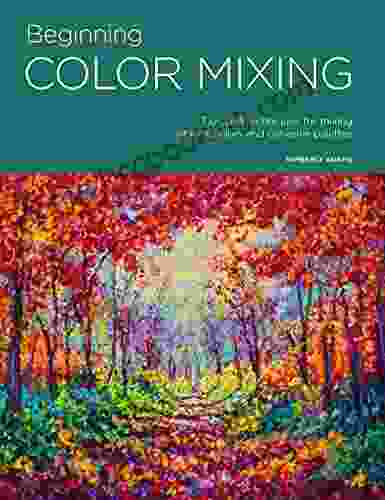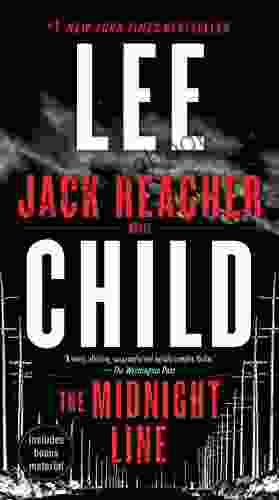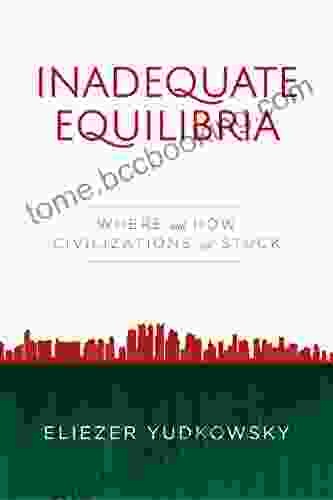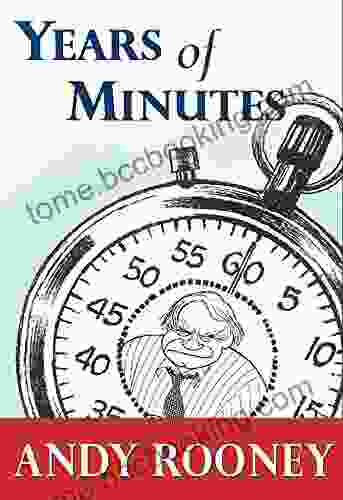Inadequate Equilibria: Where and How Civilizations Get Stuck

Unveiling the Hidden Barriers to Societal Progress
Throughout history, civilizations have exhibited remarkable cycles of progress and decline. While some societies have ascended to great heights of prosperity and innovation, others have languished in relative stagnation. The reasons for such disparities have puzzled historians, sociologists, and economists alike. However, recent research has shed new light on this enigmatic phenomenon, introducing the concept of "inadequate equilibria." This concept provides a compelling framework for understanding the forces that can trap civilizations in a state of arrested development.
4.4 out of 5
| Language | : | English |
| File size | : | 347 KB |
| Text-to-Speech | : | Enabled |
| Screen Reader | : | Supported |
| Enhanced typesetting | : | Enabled |
| Word Wise | : | Enabled |
| Print length | : | 181 pages |
| Lending | : | Enabled |
| X-Ray | : | Enabled |
Defining Inadequate Equilibria
An "inadequate equilibrium" refers to a situation in which a society becomes stuck in a self-sustaining cycle of stagnation. This state is characterized by a lack of innovation, limited economic growth, and a decline in social and cultural vitality. While the society may appear stable on the surface, it is essentially stagnant and unable to adapt to changing circumstances. This condition can persist for decades or even centuries, stifling the potential for progress and human flourishing.
Causes of Inadequate Equilibria
There are multiple factors that can contribute to the formation of inadequate equilibria. One common cause is the accumulation of institutional sclerosis. Over time, institutions such as governments, corporations, and religious organizations can become rigid and bureaucratic. They may become resistant to change and innovation, creating a barrier to progress. Another contributing factor is social stratification. When a society becomes highly stratified, with a small elite controlling a disproportionate share of resources and power, it can stifle upward mobility and innovation. This can lead to a lack of diversity in leadership and decision-making, limiting the perspectives and ideas that are considered.
Cultural factors can also play a role in creating inadequate equilibria. When a society's culture emphasizes conformity and discourages dissent, it can suppress creativity and innovation. This can lead to a lack of new ideas and a reluctance to challenge the status quo. Additionally, external factors such as war, natural disasters, or economic crises can disrupt societies and make it difficult for them to recover and adapt.
Consequences of Inadequate Equilibria
The consequences of inadequate equilibria can be profound. Stagnant societies experience limited economic growth, which can lead to poverty, inequality, and social unrest. They may also fall behind other societies in terms of technological development, innovation, and cultural vitality. This can lead to a decline in international competitiveness and a loss of influence on the global stage. Furthermore, inadequate equilibria can stifle human potential and creativity, preventing individuals from realizing their full potential.
Breaking the Cycle
The challenge of breaking the cycle of inadequate equilibria is a complex one, but it is not insurmountable. There are several strategies that societies can employ to overcome stagnation and embark on a path of progress and transformation.
1. Institutional Reform: Societies can work to reduce institutional sclerosis by promoting transparency, accountability, and flexibility in their institutions. This can involve measures such as term limits for political leaders, decentralization of power, and increased citizen participation in decision-making.
2. Social Mobility: Increasing social mobility can help break down barriers to innovation and progress. This can be achieved through educational opportunities, job training programs, and policies that promote diversity and inclusion in leadership roles.
3. Cultural Transformation: Societies can foster a culture of innovation and creativity by encouraging critical thinking, open dialogue, and risk-taking. This can involve educational reforms, public campaigns, and initiatives that support the arts and sciences.
4. External Collaborations: Societies can break out of isolation and learn from other societies by engaging in international collaborations and exchanges. This can expose them to new ideas, technologies, and approaches, providing a catalyst for innovation and progress.
The concept of inadequate equilibria provides a valuable framework for understanding the challenges that civilizations face in achieving lasting progress. By identifying the causes and consequences of stagnation, societies can develop strategies to overcome these barriers and embark on a path of transformation. Breaking the cycle of inadequate equilibria requires a concerted effort to promote institutional reform, increase social mobility, foster a culture of innovation, and engage in external collaborations. By embracing these principles, societies can unlock their full potential and create a more prosperous, equitable, and fulfilling future for all.
Image Credits
- Photo of stagnant water by nathan dumlao on Unsplash
- Photo of woman breaking through a wall by Gustavo Fring on Unsplash
4.4 out of 5
| Language | : | English |
| File size | : | 347 KB |
| Text-to-Speech | : | Enabled |
| Screen Reader | : | Supported |
| Enhanced typesetting | : | Enabled |
| Word Wise | : | Enabled |
| Print length | : | 181 pages |
| Lending | : | Enabled |
| X-Ray | : | Enabled |
Do you want to contribute by writing guest posts on this blog?
Please contact us and send us a resume of previous articles that you have written.
 Book
Book Novel
Novel Page
Page Chapter
Chapter Text
Text Story
Story Genre
Genre Reader
Reader Library
Library Paperback
Paperback E-book
E-book Magazine
Magazine Newspaper
Newspaper Paragraph
Paragraph Sentence
Sentence Bookmark
Bookmark Shelf
Shelf Glossary
Glossary Bibliography
Bibliography Foreword
Foreword Preface
Preface Synopsis
Synopsis Annotation
Annotation Footnote
Footnote Manuscript
Manuscript Scroll
Scroll Codex
Codex Tome
Tome Bestseller
Bestseller Classics
Classics Library card
Library card Narrative
Narrative Biography
Biography Autobiography
Autobiography Memoir
Memoir Reference
Reference Encyclopedia
Encyclopedia Henry Carroll
Henry Carroll Eli Burakian
Eli Burakian Hicham And Mohamed Ibnalkadi
Hicham And Mohamed Ibnalkadi Elizabeth M Varcarolis
Elizabeth M Varcarolis Edmond De Goncourt
Edmond De Goncourt Eli Schwartz
Eli Schwartz Elizabeth Partridge
Elizabeth Partridge Peter Kelly Detwiler
Peter Kelly Detwiler Edward Seidensticker
Edward Seidensticker Edward Couzens Lake
Edward Couzens Lake Dylan Dittrich
Dylan Dittrich E Chaton
E Chaton Will Jawando
Will Jawando Ian Mcdonnell
Ian Mcdonnell Michael Punke
Michael Punke Ej Ndeto
Ej Ndeto Edward C Smith
Edward C Smith Elisabeth M Raab
Elisabeth M Raab Leo Damrosch
Leo Damrosch Elena Leman
Elena Leman
Light bulbAdvertise smarter! Our strategic ad space ensures maximum exposure. Reserve your spot today!

 Norman ButlerIgnite Your Creativity: A Comprehensive Guide to Mastering Vibrant Colors and...
Norman ButlerIgnite Your Creativity: A Comprehensive Guide to Mastering Vibrant Colors and...
 Hank MitchellHaikyu!! Vol. 42: Becoming Haruichi Furudate - Unveiling the Secrets of Manga...
Hank MitchellHaikyu!! Vol. 42: Becoming Haruichi Furudate - Unveiling the Secrets of Manga...
 Alexander Blair100 Recipes To Nourish Your Body While Trying To Conceive: Your Ultimate...
Alexander Blair100 Recipes To Nourish Your Body While Trying To Conceive: Your Ultimate... Jamal BlairFollow ·6.9k
Jamal BlairFollow ·6.9k Theo CoxFollow ·18.8k
Theo CoxFollow ·18.8k Jon ReedFollow ·5.3k
Jon ReedFollow ·5.3k Kenneth ParkerFollow ·18.1k
Kenneth ParkerFollow ·18.1k Aaron BrooksFollow ·2.1k
Aaron BrooksFollow ·2.1k Thomas MannFollow ·7k
Thomas MannFollow ·7k Roy BellFollow ·8.4k
Roy BellFollow ·8.4k Jack PowellFollow ·9.8k
Jack PowellFollow ·9.8k

 Clarence Brooks
Clarence BrooksUncover the Secrets in the Dead of Night: Dive into Lee...
Step into the heart-stopping world of Jack...

 Clay Powell
Clay PowellAce the GMAT Grammar Section: Your Last-Minute...
The GMAT is a challenging...

 Salman Rushdie
Salman RushdieEmbark on a Heartwarming Journey with "The All Together...
: Immerse yourself in the charming world of...

 Dawson Reed
Dawson ReedSpring Magic: Stunningly Illustrated Fun for Kids to...
Welcome to the Enchanting World of...

 Bradley Dixon
Bradley DixonGone Tomorrow: A Gripping Thriller by Lee Child that Will...
In the literary realm of thrillers, few...
4.4 out of 5
| Language | : | English |
| File size | : | 347 KB |
| Text-to-Speech | : | Enabled |
| Screen Reader | : | Supported |
| Enhanced typesetting | : | Enabled |
| Word Wise | : | Enabled |
| Print length | : | 181 pages |
| Lending | : | Enabled |
| X-Ray | : | Enabled |








